This article discusses EOP’s research and lessons learned on how philanthropy, employers, practitioners and policymakers can support good jobs for young adults.
In this interview, Chris Fredericks, founder and CEO of the employee owned company Empowered Ventures, reflects on methods to grow employee ownership and the benefits of employee ownership for a company and its workers.
State centers of employee ownership work to promote employee ownership and educate business owners and workers about the different avenues of employee ownership available. In this brief, the Aspen Institute Economic Program discusses the strategies and practices implemented by Colorado’s Employee Ownership Office to better understand how employee ownership can be supported and grown at the state level. This profile is a useful resource to inform other state centers’ practices and the government’s role in supporting state centers, particularly as more centers emerge through funding provided by the recently passed Worker Ownership, Readiness, and Knowledge (WORK) Act.
This piece reflects on the Aspen Institute Economic Opportunities Program’s event “Economics Reimagined: A Discussion on Building a Human Rights Economy,” which discussed how to build an economic system that values and centers the well being of people.
Apprenticeships and structured work-and-learn programs, once focused primarily on younger people in particular careers, are valid options for adults and those with adult responsibilities who want or need to work while gaining their education. A new generation of these models is emerging, focusing more deeply on expanding talent pipelines, creating pathways into different industries, and offering the benefits of apprenticeship and work-and-learn models to populations that have previously been marginalized from both work and learning. This brief describes several company-led models, reaching new populations and creating meaningful opportunities for both learning workers and businesses to succeed.
Aon’s apprenticeship program has drawn widespread attention for a reason. It works. Since its inception in the US in 2017, the firm has supported nearly 300 apprentices. Within the Chicagoland cohorts, Aon reports an apprenticeship completion rate of more than 80%. Successful completion requires that students meet performance standards for both work-based learning and academic program requirements. The program is intentionally inclusive, supporting apprentices of color, women, and first-generation students as they move into good jobs. Students graduate from their programs debt-free, as Aon covers all costs of attendance at partner colleges. Aon also pays salary and benefits for apprentices, with starting salaries of $42,000-46,000 depending on location. Upon completion of the program, apprentice graduates are offered full-time employment and work in many departments, including insurance, IT, and human resources, and enter those roles as experienced, valued colleagues who earn competitive wages with exceptional benefits packages.
This brief, featuring McDonald’s Archways to Opportunity, Amazon’s Career Choice, and UPS Metropolitan College programs, describes this rare but exciting program design aspect, wherein large employers work to develop talent for opportunities beyond the business.
LeeHealth is the largest public health system in the state of Florida, serving Lee County and the surrounding areas. With over 14,000 employees and 1,800 beds, the nonprofit system engages with more than 2 million patients each year through its four acute care hospitals, two specialty hospitals, multiple skilled nursing facilities, outpatient centers, and walk-in clinics. Like many health care systems, Lee Health has persistent and acute challenges within its talent pipeline, especially among frontline staff. In nearly all hospitals, some patients require more monitoring and support than clinical staff can provide. These patients may be at risk of falling, struggle with confusion or agitation, or be at risk of harming themselves or others. The system had been exploring moving to virtual monitoring and observation for years, shifting the “safety tech” role from in-person to virtual. Lee Health needed a unified system that could enable quick decisions, comprehensive information, and, especially, clear communications between safety techs and clinical staff. After safely piloting the virtual safety tech role, employees are now observing patients in all four acute care facilities. The program has resulted in improved job quality for techs and cost savings for the system. Supported by effective upskilling and thoughtful implementation, Lee Health realized financial benefits and created new capacity to support patients and clinical staff.
This guide for employers provides guidance for the intentional inclusion of transgender workers, from recruitment and hiring to fostering a supportive culture. This resource can be used by organizations to learn about and evaluate their internal practices or practitioners looking to involve partners in working toward transgender inclusion.
At the inaugural Employee Ownership Ideas Forum, leading policymakers, practitioners, experts, and the media convened for a robust discussion on how we can grow employee ownership for the shared benefit of American workers and businesses.
